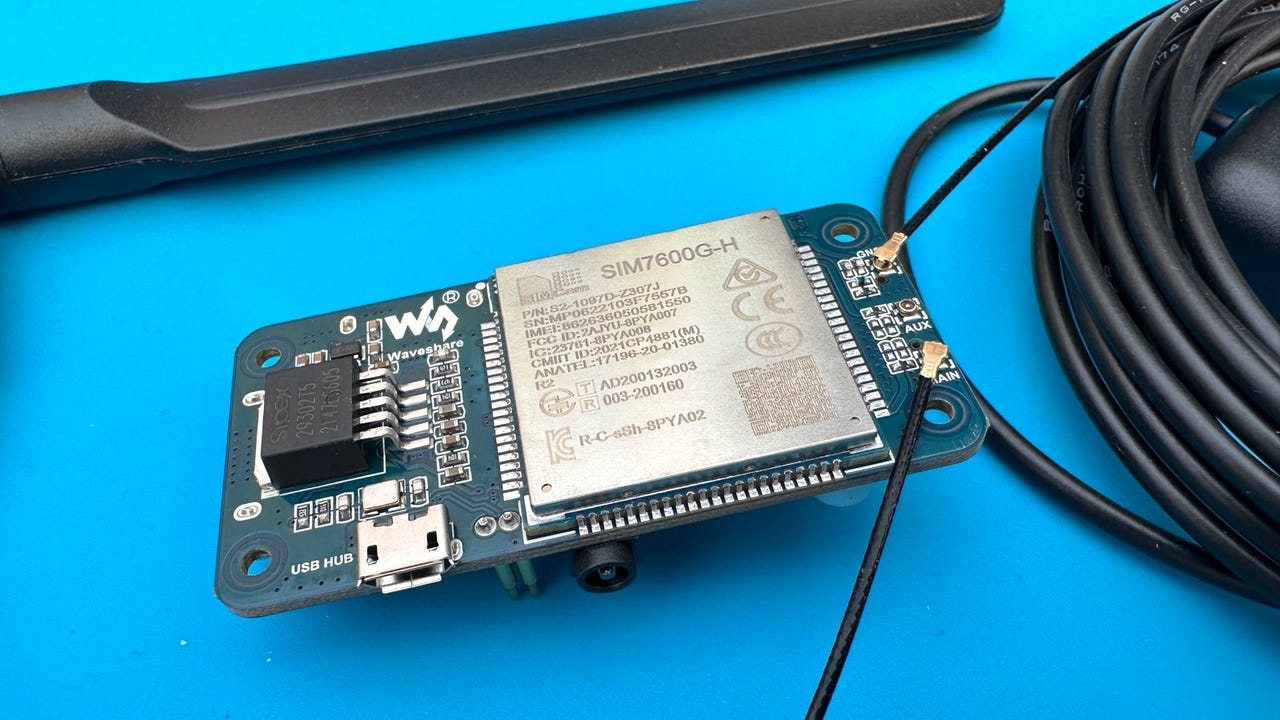'ZDNET Recommends': What exactly does it mean?
ZDNET's recommendations are based on many hours of testing, research, and comparison shopping. We gather data from the best available sources, including vendor and retailer listings as well as other relevant and independent reviews sites. And we pore over customer reviews to find out what matters to real people who already own and use the products and services we’re assessing.
When you click through from our site to a retailer and buy a product or service, we may earn affiliate commissions. This helps support our work, but does not affect what we cover or how, and it does not affect the price you pay. Neither ZDNET nor the author are compensated for these independent reviews. Indeed, we follow strict guidelines that ensure our editorial content is never influenced by advertisers.
ZDNET's editorial team writes on behalf of you, our reader. Our goal is to deliver the most accurate information and the most knowledgeable advice possible in order to help you make smarter buying decisions on tech gear and a wide array of products and services. Our editors thoroughly review and fact-check every article to ensure that our content meets the highest standards. If we have made an error or published misleading information, we will correct or clarify the article. If you see inaccuracies in our content, please report the mistake via this form.
Run your Raspberry Pi off-grid with solar power. Here's what you need

Waveshare SIM7600G-H 4G HAT (B) for Raspberry Pi Supports LTE Cat-4 4G/3G/2G
I'm working on an exciting Raspberry Pi project that requires the single-board computer to operate off-grid for a whole week, while efficiently powering the Pi itself, some low-power environmental sensors, and a 4G cellular/GPS module. Size and weight constraints are not major issues (within reasonable limits), so harnessing solar energy seems like the most logical solution.
Initially, I considered connecting a solar panel to a power bank and using that to run the Pi. Although this approach would work, it felt a bit clunky and lacked the reliability necessary for such a demanding project. Moreover, power banks aren't designed to handle solar panel charging effectively due to the fluctuating power from the panel.
Also: I found the Goldilocks of portable power stations (and it's currently on sale)
To ensure a more professional and reliable solution, I needed something equipped with MPPT (maximum power point tracking) functionality. This feature enables the charge controller to optimize energy collection and storage from variable energy sources, such as a solar panel affected by changing weather conditions.
That's when I discovered the WaveShare Solar Power Manager.
While the one I purchased required three 18650 lithium-ion batteries, I stumbled upon an alternative version with a built-in 10,000mAh lithium-polymer battery pack. This particular device serves as an optimized solar-input power bank that's designed to handle solar charging.
Waveshare Solar Power Manager
And for $35, it's an absolute steal.
Determining the required power was an important consideration. A Pi 4 consumes approximately 0.5A of power under average loads, which can increase to 1A under heavy loads. This means that a 10,000mAh battery pack can power a Pi 4 for roughly 10 to 20 hours.
Also: The best Raspberry Pi alternatives (and single-board computers explained)
(For those who are curious about the math, here's how I calculated this. Power bank capacity is measured in mAh [milliamp hours]. So, 10,000mAh is equivalent to 10Ah, meaning the battery pack could sustain a 10A load for about 1 hour or a 1A load for approximately 10 hours. However, real-world efficiency is typically around 80%, so a 10,000mAh power bank would comfortably support a 1A load for at least 8 hours.)
But that power consumption is for the Pi 4 alone, and not the sensors and 4G module that need to be factored in. With that in mind, I chose to go with the much more energy-efficient Pi Zero 2 W.
The Pi Zero 2 W consumes about 0.1A under average loads and can peak at around 0.4A under heavy loads. This means the 10,000mAh lithium-polymer battery pack will provide an even better runtime for the Pi Zero 2 W, and easily handle the additional load of the environmental sensors and the 4G module.
Also: How I solved one of my biggest Raspberry Pi headaches
And don't forget: When the sun is shining, the battery inside the WaveShare Solar Power Manager is continually being topped off.
Now, let's talk about the solar panel.
This is a beefy solar panel, and overkill for this project.
Because solar panels come in various shapes, sizes, and price ranges, this is where things can get exciting. Personally, I wanted a solar panel that could continuously recharge the batteries while the Raspberry Pi was running and had the added benefit of being waterproof.
Also: This Raspberry Pi (or other SBC) cooler is better than heatsinks and fans for me
I happened to have an expensive 5V/10W waterproof Voltaic P110 solar panel lying around unused. However, if you're looking for a more cost-effective option, consider a 5V/6W solar panel designed for powering stick up security cameras.
Connecting the solar panel to the solar power manager
I have tested this setup and successfully ran a Pi 4 continuously for over a week, solely powered by the late spring sun here in the UK, so, I am confident that it will be more than capable of handling a Pi Zero 2 W equipped with sensors and the 4G module.
It blows my mind just how well this system works.
